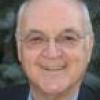Those of us in the Roman Catholic tradition tend to be parochial in our appreciation of non-Roman liturgical and spiritual traditions.
For example, on Sept. 25 major portions of the body of Christ (but not the Roman Catholic church) celebrated the feast of St. Sergius of Radonezh, regarded as the greatest of the Russian saints and the patron of Russia itself. In fact, he has been referred to as the Russian Orthodox Francis of Assisi.
Sergius’ feast day is also celebrated not only in the Russian Orthodox church, as one would expect, but also in the Greek Orthodox church, the Church of England, the Episcopal church in the United States, the Evangelical Lutheran Church in America, and in Eastern Catholic churches, generally because he was canonized before the Orthodox rejection of the Union of Florence in 1439.
Sergius is said to have founded some 40 monasteries, and served as a mediator and peacemaker in various political disputes, having been credited with preventing four civil wars between princes.
Much of the material for this column is taken from my book, Lives of the Saints.
Sergius was baptized Bartholomew around 1315. It was after his parents’ deaths that he withdrew in 1335 with his widowed brother, Istvan (Stephen), to the forests of Radonezh to take up a life of monastic solitude.
The following year he built a chapel and soon attracted disciples. He became their abbot and was ordained a priest. It was at that time that his name was changed from Bartholomew to Sergius.
Almost 20 years later he and his disciples adopted a cenobitic (communal) rule, and the great monastery that developed became a center of pilgrimage and the spiritual heart of Russian Orthodoxy.
The new monastery reestablished monastic community life in Russia. But four years later Sergius withdrew from the monastery because of the divisive return of Istvan.
The once-flourishing monastery declined, and the metropolitan of Moscow urged Sergius to return. Sergius acceded to the metropolitan’s request, to the great joy of the monks. In 1378, however, he refused election to the patriarchate of Moscow.
Sergius died on Sept. 25, 1392, and was buried in the monastery’s principal church, which soon became a popular place of pilgrimage, even to this day.
On Sept. 26 the Catholic church marked the feast of Cosmas and Damian, who are the patrons of physicians, nurses, surgeons, dentists and other medical personnel, even though there is little reliable information about the two saints.
Their feast is also celebrated in the Russian and Greek Orthodox churches on both July 1 and Nov. 1.
Their legend says that Cosmas and Damian were twin brothers born in Arabia, and doctors who practiced medicine without taking any fees for service. Thus, in the East they are known as the anargyroi (Greek, “the moneyless ones”).
Although many cures were attributed to them, they were arrested during the Diocletian persecution of Christians. They were brought before the governor of Cilicia, then tortured and beheaded in Cyrrhus, north of Antioch, in Syria.
A great basilica was built there in their honor and from which their cult spread throughout the Christian world.
Another church was erected in their honor in Constantinople in the fifth century, and still another in Rome the following century, when Pope Felix IV (526-30) brought their relics there and built a basilica by joining two pagan temples in the Roman Forum.
It was around the same time that their names were included in the Canon of the Roman Mass (the first Eucharistic prayer), and six other Roman churches were dedicated to them.
Their cult continued to spread from Rome, and many other churches were dedicated to them in Greece and Eastern Europe. Devotion to Cosmas and Damian was encouraged and promoted by the Medici family of Florence, a number of whom were named Cosimo.
It is one of those insoluble mysteries of Catholic devotional life that these two saints, Cosmas and Damian, would become so popular in the church in spite of the fact that there was, and is, so little reliable information about either of them.
[Fr. Richard McBrien is the Crowley-O’Brien professor of theology at the University of Notre Dame, Ind.]
Editor's Note: We can send you an e-mail alert every time Fr. McBrien's column, "Essays in Theology," is posted to NCRonline.org. Go to this page and follow directions: E-mail alert sign-up. If you already receive e-mail alerts from us, click on the "update my profile" button to add "Essays in Theology" to your list.




